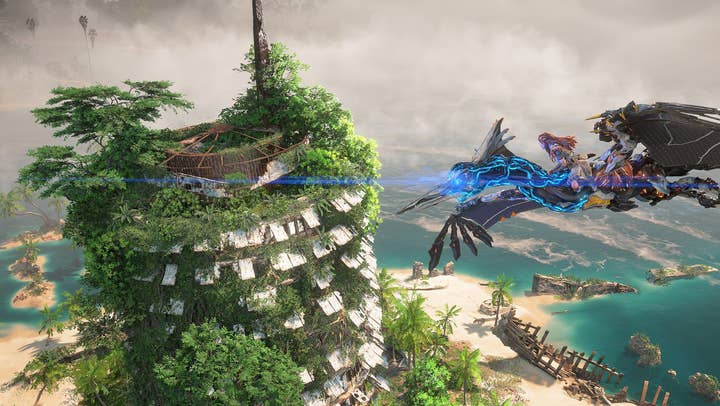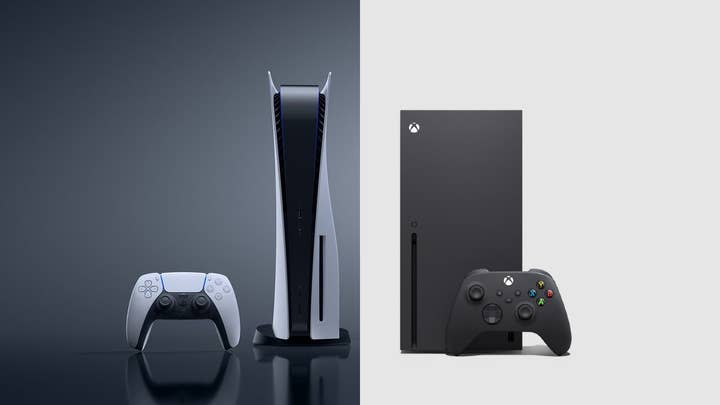As supply chain issues subside, the cold console war heats up | Opinion
For two years, supply issues have dampened competition between Microsoft and Sony – but now both sides will be out to prove superiority
Sign up for the GI Daily here to get the biggest news straight to your inbox
The first couple of years of the current console generation have been very unusual, to say the least.
Ordinarily, the near-simultaneous launch of two systems like the PlayStation 5 and Xbox Series X would be the starting gun for an intense period of competition between the platforms – a contest which was expected to be all the more hard-fought this time around due to the very different visions for the industry's future which Sony and Microsoft were proposing.
Instead, we've had a kind of uneasy faux-competition, with neither side actually able to really engage to the extent they might have liked. Supply shortages have always been part and parcel of the launch of major new consoles, but with PS5 and XSX, those shortages went on, and on, and on, through one Christmas and then the next, without there ever being a point where most consumers could simply buy a new console as easily as any other consumer product.
These shortages had the effect of freezing the console industry in place – the place in question being an awkward mid-step between generations. Sony and Microsoft, unable to meet consumer demand for their systems, both rowed back on their plans to support and promote the new platforms, since creating a surplus of new demand when you can't meet existing demand is wasteful and serves only to annoy and frustrate potential consumers.
In a sense, this is the real starting point for the competition between Sony and Microsoft
Publishers and developers revised their plans to allow for the continued market centrality of the PS4, extending their forecasts for the duration of its long tail again, and again. Lower powered systems filled in the gap between high demand and low supply of gaming devices during the pandemic, with the Xbox Series S selling in huge numbers not least because it was often the only new device actually available. And Nintendo almost certainly pushed back plans for an update to the Switch hardware – why not, when the increasingly long in the tooth Switch was still selling so strongly?
We may finally be at the end of this chapter.
In the past couple of months, the supply channel for the high-end consoles – which had been easing a little through late 2022, before Christmas knocked inventory for six again – has resolved itself in most major markets. There are still some rough patches – not every region has a fully stocked channel just yet, and on an even more fine-grained level, some retailers are still restricting sales (selling only to points club members, or distributing invitations by lottery) even as their competitors allow consumers to buy the systems with relative ease. Still, for the first time, it's now possible for most consumers who want a PS5 or an XSX to get one within a day or two, without paying scalper prices.
That will come as a relief to a lot of different people around the industry, for a lot of different reasons. Plenty of damage has already been done – most notably, mainstream games will need to keep supporting the almost ten-year-old PS4 hardware (and to a lesser extent the now six-year-old Switch, which was already underpowered compared to its competitors when it launched) for many years longer than was originally planned, which will place significant limitations on game development. The high-end consoles will get better resolutions, framerates, and loading times, of course, but most key game features need to work across all platforms, and as long as the PS4 has to be supported, games will still have to be created with the limitations of that hardware in mind.
But now that supply and demand are finally balancing out, companies can start firming up a timeline for dropping PS4 versions of major titles. Sony's decision to make the Burning Shores expansion for Horizon: Forbidden West into a PS5 exclusive is a sign of where the wind is blowing – and suggests pretty strong confidence in the company's ability to keep the hardware on store shelves in future.

That confidence may not be universally shared. While it's great that these incredibly long-standing supply chain issues are now finally coming to an end, the sobering reality is that some of the points of failure which caused those issues remain very vulnerable. Game consoles are the end product of an incredibly complex set of supply chains, many of which are under enormous demand – including from sectors which are far less cost-sensitive than gaming hardware – and almost all of which are at risk of disruption from anything that rocks the boats of global or regional trade. Those boats have been rocked a lot lately; anyone making business plans around video games for the upcoming years will be keenly aware that while things look good for now, there's a laundry list of potential geopolitical shocks that could throw the supply chain problems right back to square one.
As long as the PS4 has to be supported, games will still have to be created with the limitations of that hardware in mind
It doesn't help that those issues were exacerbated by a systemic failure to take seriously the issue of scalping – which remains another point of vulnerability for the hardware side of the industry.
In smaller markets in particular, resellers monopolised stocks of the new consoles (and of high-end graphics cards), choking down already constrained supply to a point where there were months and months on end where consumers' only realistic way to get their hands on a console was to pay a huge markup to a scalper. While some retailers belatedly tried to combat this, for the most part the industry remains vulnerable to the same thing happening again in future – at the launch of high-demand hardware, or in a situation where another supply chain shock throws supply and demand out of whack again.
Still, after two rough years, supplies of the hardware that a large part of the industry relies upon for its existence are finally starting to match up to the demand. That has led to some interesting sales numbers coming through, such as last month's record PS5 sales in Japan, which saw Sony's console outpace sales of the Switch for the first time.
That situation is unlikely to last – the Switch may be long in the tooth, but it remains the dominant force in the Japanese market – but for now, the pipeline has been unkinked and the pressure that had built up is being released. The launch of Hogwarts Legacy helped to juice those Japan numbers, but for the most part what we're seeing here and in other markets is supply finally starting to match to heavily backlogged demand.
In a sense, this is the real starting point for the competition between Sony and Microsoft. That's an odd thing to say when both companies have consoles with tens of millions of unit sales on the market – but with supply matching demand, it's now actually possible for the platform holders to really start promoting and supporting their consoles, knowing that they're no longer wasting money on promoting a piece of hardware that most consumers can't actually buy.
From a perspective of market analysis, it also means we'll finally start to see what's happening in terms of demand for these devices. Supply-side issues have heavily distorted industry sales data for the past two years, because it's near-impossible to say anything authoritative about the relative performance of products whose sales figures are always determined by supply rather than demand. A month when Microsoft outsold Sony, or Sony outsold Microsoft, was really just a month in which one company or the other managed to get more units into the channel; consumer demand consistently ran above 100%, so we never got any firm data on how far above 100% that might be.
Sony and Microsoft need to really focus on how they present their service offerings to the broader public
The first quarter of this year will similarly be distorted by this process of unkinking the hose. The hardware numbers in this quarter aren't going to be reliable guides for future sales trajectories, although they will give us some clarity about how much pent-up demand there really was in the past year or so. As we approach the middle of the year, though, assuming no further supply chain disasters, we should finally start to see a regular, demand-driven market for the new consoles for the first time. We should see both companies make much more aggressive pitches to consumers for how their console's line-up of software and services is different to the competition – and how that makes it superior.
This also comes at the point where both consoles have arguably picked their low hanging fruit. Early adopters and core consumers are the easiest market to reach for these platforms, but tens of millions of those already have a high-end console – so to continue growing the installed base, the platform holders must now appeal to much more price-conscious and harder to please audiences.
Announcing and launching exclusive software will be crucial, just as it always has been, but both Sony and Microsoft also need to really focus on how they present their service offerings to the broader public. How effectively they promote and explain the value of services like Xbox Game Pass and PlayStation Plus is likely to influence the industry landscape for years to come.
For the first time this generation, the platform holders are in direct competition for consumers who face a choice between these consoles – so after a two-year delay, this battle in the console war is actually getting underway in earnest.
Sign up for the GI Daily here to get the biggest news straight to your inbox

